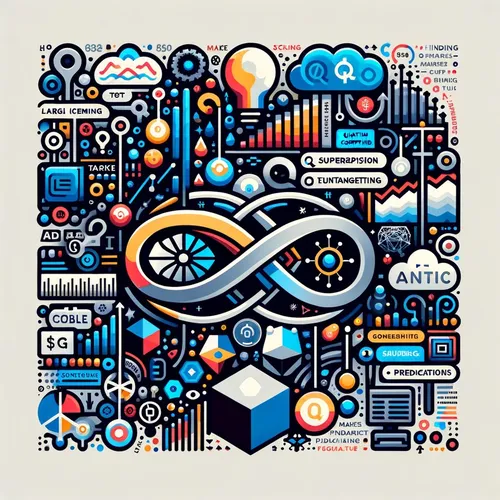Quantum Grid Breakthrough: IonQ and Oak Ridge Crack Power Puzzle
- Author
- Quiet. Please
- Published
- Fri 08 Aug 2025
- Episode Link
- https://www.spreaker.com/episode/quantum-grid-breakthrough-ionq-and-oak-ridge-crack-power-puzzle--67302078
This is your Quantum Market Watch podcast.
The hum in the lab today reminds me of the hum across the energy sector—tense, expectant, positively electrified. I’m Leo, Lead Quantum Systems Specialist, and you’re tuned in to Quantum Market Watch. Let’s dive right into a milestone shaking up both quantum computing and the electricity grid—one that broke just this week.
On Monday, the world watched as IonQ and Oak Ridge National Lab unveiled a quantum-classical breakthrough: solving a daunting, real-world power grid optimization challenge. Imagine the delicate balance of generators humming across an entire grid, 26 units facing 24 separate time periods, each demanding a split-second decision for output and schedule. For decades, this intricate chessboard stumped classical supercomputers. But on a sultry August morning, IonQ’s 36-qubit Forte quantum processor, partnering with Oak Ridge’s finest, cracked the code.
This wasn’t merely academic flair. In the control room, you could almost taste the ozone—quantum bits superposed and entangled, weaving a tapestry of answers in the dark, cold void of a dilution refrigerator. The unit commitment problem—once a wall blocking further grid reliability and cost efficiencies—yielded to a hybrid quantum-classical workflow, optimizing a schedule for a real US energy infrastructure scenario. It’s as if the rules of time and complexity finally flexed.
Let me get a touch technical: inside IonQ’s Forte, each superconducting qubit is coaxed into cooperation via microwave pulses, linked in quantum entanglement. But these aren’t solitary performers; the team built a workflow where classical computers slice down the possibilities, while the quantum side attacks the remaining complexity. It’s like watching Kasparov and AlphaZero tag-team a chess problem—human logic setting up the pieces, but letting quantum intuition place that decisive move. IonQ’s CEO Niccolo de Masi summed it neatly: as qubits scale, quantum devices will tackle problems too complex for any traditional number cruncher.
Why does this matter for the energy world? Let’s draw the quantum parallel: our national grids are tiptoeing tightropes strung with renewables, battery fields, and ever-tougher demands for resilience. Optimization at quantum speeds means lower energy costs, fewer emissions, blackout resistance. Picture renewables seamlessly entering and exiting the mix—solar storms, wind lulls, demands spiking for the air conditioners of August. Quantum computing promises to answer, in milliseconds, the puzzles that kept operators up at night.
Recent shifts like this have moved quantum hopes off the blackboard and onto executive dashboards. The US Department of Energy’s GRID-Q initiative, which backed this demo, sees its future staked on early “quantum advantage.” Just as the 19th-century rail barons mapped the nation with steel, the 21st century could be mapped in quantum-optimized electrons.
This is only the start. Every time quantum bits shatter a bottleneck in fields like energy, it brings us closer to a world where the weirdness of the quantum can light, heat, and empower our lives.
Thanks for joining me, Leo, on Quantum Market Watch. Got burning questions or a topic you want explored? Send me an email anytime at [email protected]. Don’t forget to subscribe for more, and remember, this has been a Quiet Please Production. For more, visit quietplease.ai.
For more http://www.quietplease.ai
Get the best deals https://amzn.to/3ODvOta
